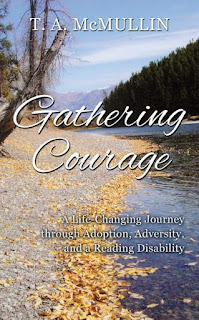Can Thumb Sucking Be Addictive?
A brief look at the research into those who constantly suck their thumb.
“When I got to pre-school, I discovered that thumb sucking was not the social norm. Other kids teased me: ‘Only babies suck their thumbs!’ This was terrible news. I didn’t want to be a baby, but there was no way for me to stop doing the only thing in the world that soothed me; the one thing I could do, in a violent home, to comfort myself and feel safe. So I compromised: I stopped sucking my thumb in public…But at home, or during any moment of privacy…my left thumb went automatically into my mouth. Rather than tapering off as I aged, my thumb sucking intensified, and I added a small swatch of cotton blanket to the ritual, rubbing it against my upper lip until it was soft and grey. My
parents had split up, and I was moving from place to place with my mother and stepfamily, so nobody really had the energy to monitor my behavior. If anybody did notice and say something to me (‘Stop that, you’re going to ruin your teeth!’), I just popped the thumb out and waited 30 seconds before the coast was clear again.” (Janice Erlbaum)
The opening quote is taken from Janice Erlbaum’s blog article “I was an adult thumbsucker” (a habit she managed to kick when she was 26 years old). From Erlbaum’s full account, I wouldn’t class the behavior as an
addiction although depending on what definition of addiction is used, an argument could perhaps be made. I have to admit that adult thumb sucking is something which I have often thought about as someone I know well has sucked her right thumb all her life. She’s now in her forties and has two completely different shaped thumbs (one ‘normal’ and the other flat and very elongated) as a result of four decades of constant thumb sucking. She also tells me that her upper mouth palate has also changed shape and her thumb fits perfectly into the upper groove in her mouth. She also has a number of little routines she performs while sucking her thumb including the caressing of her eyelashes with her right index finger which when thumb sucking is close to her eyes. She only ever does it when relaxing (such as when she’s watching television) and has learned not to do it in public. During her junior years and early
adolescence, her parents tried to get her to stop, and at one point she was given a substance to coat her thumb in (which tasted disgusting when she put her thumb in her mouth). It didn’t work. She still sucked her thumb and put up with the horrible taste.
Most parents reading this will be aware that thumb sucking tends to emerge in infancy (although there is some evidence that babies can suck their thumbs inside the womb. For instance, Professor Peter Hepper and his colleagues (Queen’s University, Belfast, Northern Ireland) have followed up children who were known to have sucked their thumbs as fetuses). Constant thumb sucking is not necessarily problematic but depending on how the thumb is sucked, it can cause protruding teeth and other dental problems such as anterior open bite, malocclusion (i.e., misalignment of teeth or incorrect relation between the teeth of the two dental arches), and mucosal
trauma. Other problems include deformity of the thumb (something which I have seen for myself first-hand) and speech problems. Thumb suckers are also more prone to infections such as impetigo around the mouth (i.e., a highly contagious bacterial infection of the surface layers of the skin, which causes sores and blisters), and paronychia of the thumb (i.e., a skin infection that occurs around the nails). Basically, as children get older, the more of a problem thumb sucking is from a medical perspective. As one review of thumb sucking in the American Family Physician journal concluded:
“Major complications of thumb sucking, usually corrects spontaneously if thumb sucking ceases by six years of age. Thumb sucking in a child less than two years of age requires no treatment. In a three-to four-year-old child, thumb sucking may be secondary to changes in the child's emotional
environment, and treatment should be directed at correcting the underlying problem. Thumb sucking that persists beyond the age of six years should be treated.”
An article on thumb sucking in Psychology Today by psychologist Dr. Susan Heitler looked at the topic of thumb sucking. Dr. Heitler had been a thumb sucker herself until she was nine years old and had to endure “years of orthodonture” because of her
childhoodthumb sucking. Her own daughter was also a thumb sucker and her dentist told her that "trying to end thumb sucking will do more harm than good," advice that she was not happy with given her own experiences. In her article, she wrote:
"Looks are hugely important to one's success in life. Allowing thumb sucking to damage facial appearance is wrong advice. By the time a child is four or five, with the habit no longer socially appropriate and permanent teeth coming shortly, the risks of continuing to thumb or finger suck clearly outweigh the benefits…When does a bad habit qualify as an addiction? Usually it's a function of how much the habit has become physiologically essential so that people feel craving when it is missing. That definitely happens with thumb sucking.”
Dr. Heitler’s article referred to empirical research that had been carried out on thumb-sucking although none of the main findings had any detail as to who had carried out the work, where the research was published, or what methodologies were employed (apart from very general information). Here are some of the main things she reported:
“In a study with premature infants, researchers found that infants who sucked their thumbs or a pacifier had shorter hospital stays. That was because rhythmic sucking soothed them so that they spent less energy in crying. In addition, sucking re-optimized their heart beats and breathing patterns if they were beginning to get upset…In studies of children who do or do not suck a thumb, finger or pacifier, it turns out that the suckers become emotionally more independent at a younger age. Researchers put a child and mom on one end of a long room. On the far end were appealing toys. The suckers ventured further and played with the toys away from Mom longer than the non-suckers…They just had higher self-
confidence in being able to handle independent play, knowing that if they felt stressed they could suck for a bit, feel better, and resume playing on their own. It's generally not until they become toddlers that the downsides of thumb sucking begin to outweigh the gains. Kids then tend to suck when they are trying to fall asleep, when they bored, when they are idling between activities, or to self-soothe when they are upset.”
One online article on thumb sucking reports that it is a common activity among infants (30%-40% of those yet to start school) and around 10%-20% of children aged over six years. In a more academic source, Dr. Sherry Ellington and colleagues (in a 2000 issue of the Journal of Applied Behavior Analysis) reported that thumb sucking is estimated to occur in 23% to 46% of children aged one to four years. As with the article by Dr. Heitler, it claims that thumb sucking may have a psychological benefit for young children as it “allows them to consolidate emotions and handle their stresses.”
In a 1953 paper in the International Journal of
Psychoanalysis, the Dr. Donald Winnicot presented his theory of transitional objects and phenomena. Dr. Winnicott compared thumb sucking with the use of external objects such as children’s use of comfort blankets drawing parallels between the two. He also a claims that childish actions like thumb sucking and objects like cuddly toys are the source of manifold adult behavior, amongst many others sexual
fetishism. It is also claimed (particularly by psychodynamic psychologists) that such actions stem back to childhood trauma and that behaviors like thumb sucking help facilitate the need to feel comforted and secure. Another early longitudinal study by Dr. Marjorie Honzik and Dr. John McKee published in the Journal of Pediatrics reported that after the first year of being born, girls more likely to suck their thumbs than boys. The main reason was speculated that “girls' greater orality may involve greater pleasure from tactile stimulation.”
There doesn’t appear to be much empirical research on adult thumb sucking. A small 1996 study in the Journal of Clinical
Psychiatry led by Dr. F. Castellanous found that in 12 intellectually normal adults with stereotypic movement disorder, eight of them displayed thumb sucking and/or rocking behavior (and 11 of them had an affective
anxiety disorder suggesting that behaviors such as thumb sucking may be engaged in to help reduce anxiety). A 2008 literature review by Dr Orlando Tanaka and colleagues in the American Journal of Orthodontics and Dentofacial Orthopedics reported some evidence that thumb sucking might turn into nail biting. This might explain why there is such a seemingly low prevalence of thumb sucking in adults. All the evidence suggests that thumb sucking in adults is not an addiction but in some people may be symptomatic of other underlying disorders.
Original article found
here





![Roman Christians: How today's Christians can be saved by not going to any church by [Gilchrist, Oyanilo C]](https://images-na.ssl-images-amazon.com/images/I/51UkwlL21aL.jpg)






